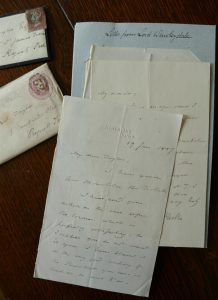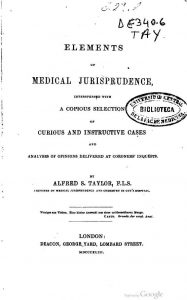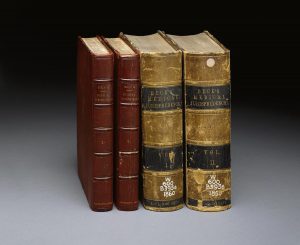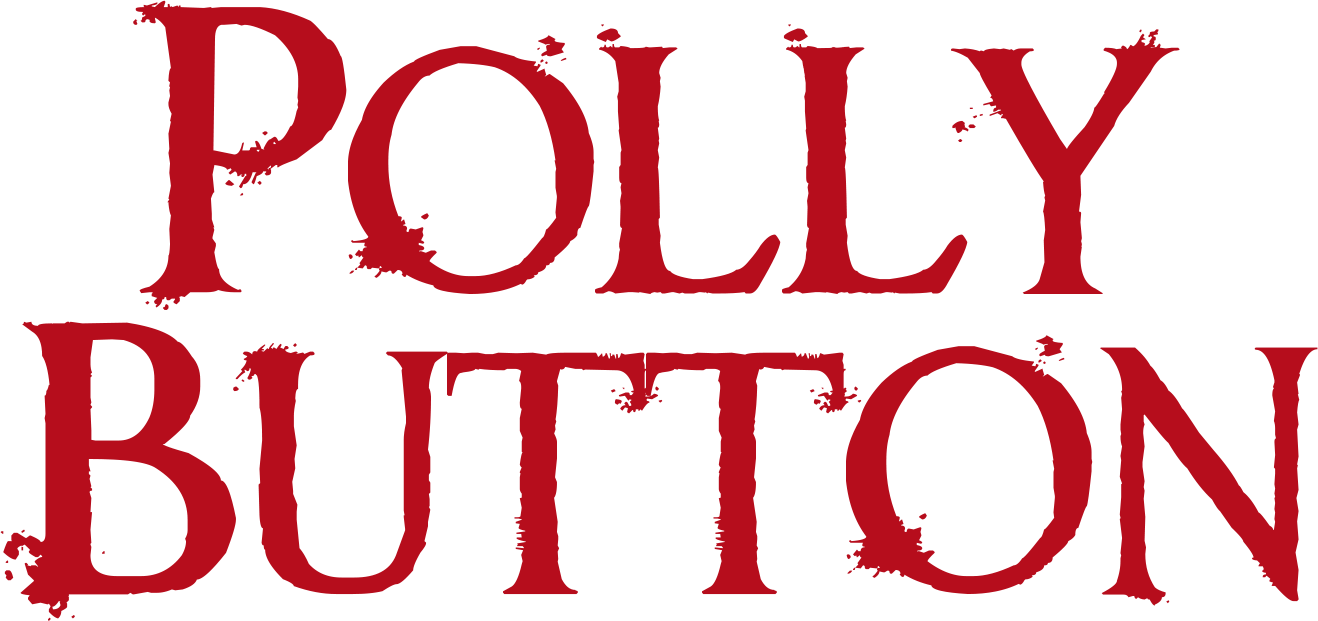Do we have a photograph of Polly Button?
Unfortunately, not. Polly Button died just prior to the advent of photography.
What did Polly Button look like?
We don’t know. There is no photograph of her. However, she was described by at least one newspaper of the time as being ‘of unfortunate appearance’ – probably influenced by the prejudicial perception that she may have been a prostitute.
Where did Polly Button live?
She lived in a house in No. 8 Court (Twitchell’s Yard), Upper Abbey Street, Nuneaton. Her house was located in what is now the rear yard of a small run of shops at the junction of Friary Street and (Upper) Abbey Street. Full details, including new accurately drawn maps and images, are included in the book, The Undoing of Polly Button.
Who killed Polly Button?
John Danks, an agricultural labourer and a carpenter, of sorts.
Why did John Danks murder Polly Button?
For various reasons that are explained in The Undoing of Polly Button, he was in a desperate state. The Poor Law Guardians were seeking significant payments from him for non-payment of maintenance for a child he had fathered with Polly Button two years previously. She was also pregnant again with his (second) child. The economic collapse in the town in the few years before the murder was also a major factor.
Where was Polly Button killed?
She was attacked in Astley’s hovel (a barn) located near the junction of Aston Road and St Mary’s Road, Nuneaton. She actually died in the roadway nearby, having somehow managed to rouse herself in an attempt to get back to her five children.
How was Polly Button killed?
Polly Button was killed after being knocked to the ground by John Danks, who then slashed her with a folding pocketknife and inflicted three lacerating wounds. One of the two cuts to her throat severed the major blood vessels in her neck and was the cause of her death. Full details of the attack, including the build-up to their argument in the barn, the physical struggle that ensued and a newly commissioned illustration of the wounds to Polly Button’s throat are contained in The Undoing of Polly Button.
What happened to her five children?
Polly Button’s five children, who were aged from 2 – 17 years old at the time of her murder, all grew to adulthood. Four of them had children of their own. As part of the Polly Button Project, efforts have been made to trace as many direct descendants through to the present-day. More than 1,000 living descendants have been traced to date. The background to, and the full results of, this unique and significant research are given in the book The Undoing of Polly Button, together with some short biographies of some interesting individuals within the family tree of descendants.
How and when was Danks arrested?
He was arrested the day after the murder by Joseph Haddon, the parish constable for Nuneaton, in what is now modern-day Stockingford .
How did John Danks plead at his trial for the murder of Polly Button?
Not guilty.
Do we know who John Danks’s executioner was?
Yes, we do. He was Samuel Haywood, from Appleby Magna in Leicestershire. The background as to why Haywood became an executioner is detailed in The Undoing of Polly Button.
Is the rope used to hang John Danks still in existence?
Impossible to say with certainty, but probably not. However, the rope Samuel Haywood, Danks’s executioner, used for his last hanging (in 1843) is part of the Black Museum collection of the Metropolitan Police.
Is it true that Danks was dissected after he had been hanged?
Yes, it is. He was taken from his place of execution (Warwick) to the School of Medicine in Birmingham, where he was the subject of a series of four demonstration/dissection lectures by the surgeon, William Sands Cox. Full details are included in the book, The Undoing of Polly Button.
Why did you write the book?
I’d become aware of the fact that my wife was a direct descendant of Polly Button’s middle child, Hannah Green, many years ago when I was doing some family history research. As a consequence, I had always intended to see if I could write a book about it. Once I realised how much the internet could aid my research into the background of the murder, it sort of snowballed from there. Five years later, on 28 August 2019, my ambition was realised with the publication of The Undoing of Polly Button.
How long did it take you to research and write the book?
Publication of the book was in the fifth year of the project. I have been quite dogged in my research, always trying to find out anything I could think of that may have been relevant to the story. Tracing the full family tree and getting contact details for more than 1,000 direct descendants obviously took quite some time too.
Bruce Springsteen song titles for chapter headings? Really?
Yes. We’ve been fans of Bruce Springsteen and the E Street Band since we first saw them at Wembley Stadium on 4 July (yep, US Independence Day!) 1985. What started as a possible title for the book, Darkness on the Edge of Town, arose because Polly Button was killed in a location that was literally on the very outskirts of Nuneaton. It became one of the chapter titles when we realised that there was an appropriate song title for each of the chapters, as follows:
| 1 | THIS HARD LAND | The Undoing of Polly Button: An Introduction |
| 2 | DEATH TO MY HOME TOWN | Nuneaton: The Scene of the Crime |
| 3 | HUNGRY HEART | Polly Button and John Danks |
| 4 | BADLANDS | Nuneaton in Early 1832: Desperate Times, Desperate People |
| 5 | DARKNESS ON THE EDGE OF TOWN | A Premeditated and Callous Attack |
| 6 | THE PRICE YOU PAY | The Trial, Execution and Dissection of John Danks |
| 7 | THE TIES THAT BIND | Ripples from the Past – Places and People |
Is it true that author profits from sales of early editions of the book have been donated to charity?
Yes, all author profits from the sale of the first two print runs of the book were donated to three local charities and good causes: a Nuneaton women’s refuge run by a leading domestic violence charity, the Chilvers Coton Heritage Centre, and Nuneaton Memories. In December 2020, £1,000 was donated to each of the three charities.
What sources have you used to research the story of Polly Button?
There are 59 separate sources referenced in The Undoing of Polly Button. These range from a book by W. Acton on prostitution to Ted Veasey’s book Nuneaton – A History. They include a PhD thesis and several significant and extensive government reports from the nineteenth century on the problems facing silk weaving communities, such as Nuneaton. These substantial reports amount to approximately 2 million words; their contents have been assessed for relevance to the background of Polly Button’s story and then summarised/distilled into key facts and pertinent information. This has then been woven, in a highly readable and accessible way, into the text of the book so as to provide a clear account of the critical impact silk ribbon weaving had on Nuneaton during Polly Button’s lifetime.
Why does the book have footnotes?
I’m a bit of a stickler for evidence. Sometimes, when I’ve read books, articles etc in the past I have wanted to check or read more about the point that was made in the text. On occasions there might be no evidential reference at all, and at other times the notes might be placed in a section at the end of each chapter. I much prefer to have the footnote on the page it refers to, for the ease and convenience of the reader. However, readers’ enjoyment of the story will not be diminished should such footnotes and references be considered after finishing the book.
Are the illustrations as special as people are saying?
I’m perhaps bound to be somewhat biased, but I think that the illustrations in the book really help bring the story to life. All have been reproduced in high quality and, where possible, in colour. Standout illustrations from the book include:
- a copy of a map that was used at John Dank’s trial (and two new georeferenced versions that include an overlay onto the modern layout of Nuneaton). The maps show clearly where various buildings were located and where relevant events took place.
- The first ever illustration of the wounds to Polly Button’s throat inflicted by John Danks’s pocketknife. The image was created by Pat Thomas, a leading US medical illustrator http://patmedicalart.com/).
- A specially commissioned dramatic illustration of Polly Button lying dead in front of her five children, that has been donated by the talented illustrator David Lupton (https://www.david-lupton.com/). The image is an interpretation of the illustration ‘Grief’, by the German artist Katthe Kollwitz.
- An original series of charts produced by the author that graphically and clearly demonstrate the scale of the catastrophe that befell Nuneaton in the few years before Polly Button was murdered.
Why does the book have flaps?
All will be revealed when you open them!
Do we know who the Judge and legal representatives were at the trial of John Danks?
Yes, and the book contains images of the trial judge (Justice James Parke) and the two prosecuting counsel (Adams and Amos). Photographs of the latter two were taken for inclusion in the book from the only images (paintings) of them found to exist; this involved visits to central London and Cambridge University.
Is it true that you have letters written by the trial judge?
Yes, it is. I bought a collection of letters that were written by the trial judge (Justice James Parke) to ‘the father of British forensic medicine’, Alfred Swaine Taylor. Both have links to Polly Button: Parke being the judge at Danks’s trial (so obvious link there!), whilst Taylor included details of the circumstances of the murder of Polly Button in his standard/definitive textbook on medical jurisprudence.


What view would Danks have had when he came up the narrow staircase into the prisoners’ dock at Warwick Crown Court?
A panoramic view from the prisoners’ dock has been created for the book from photographs taken in the actual courtroom where Danks’s trial took place in March 1832. The courtroom, which still exists, is located in Warwick Crown Court building. The illustration in the book has been labelled so as to show where the various interested parties would have sat during the trial.
The book cover is tremendous - really dark and atmospheric and makes me want to know more about Polly Button's story! Who designed the cover?
A really helpful and talented guy by the name of Richie at MoreVisual Ltd. in Leicester. We met up, I described the background to the story of Polly Button’s murder and this was virtually his first draft design – bullseye!
Is it true that the details of Polly Button's murder became known about internationally?
Surprising at it may sound, yes. The circumstances of the murder and, in particular, the details concerning Polly Button’s death, were such that they were included in national and international standard textbooks on forensic medicine. This is covered and explained in The Undoing of Polly Button.

How can I book Steve Moore for a talk about Polly Button?
Send an email via the Contact section of this website. Use the drop-down menu and select ‘Request a Talk’ and give full details of your request and your contact details.
Can I book Steve Moore to give a guided tour of the key locations associated with the Polly Button story?
Yes, you can. He can be booked, by arrangement, to give a guided tour that covers the key locations and during which he provides an informative and illustrated account of the background to the story of Polly Button. The distance covered by the walk is about 1.75 miles in total. Walks typically last about 1.5 hours, depending on the numbers and mobility of those attending – and on the number of questions asked of course! The cost per person is £10 per person (minimum 3 people / £30). Those booking a guided tour will be able to take advantage of a special offer and buy a copy of The Undoing of Polly Button at a special price of just £13.
